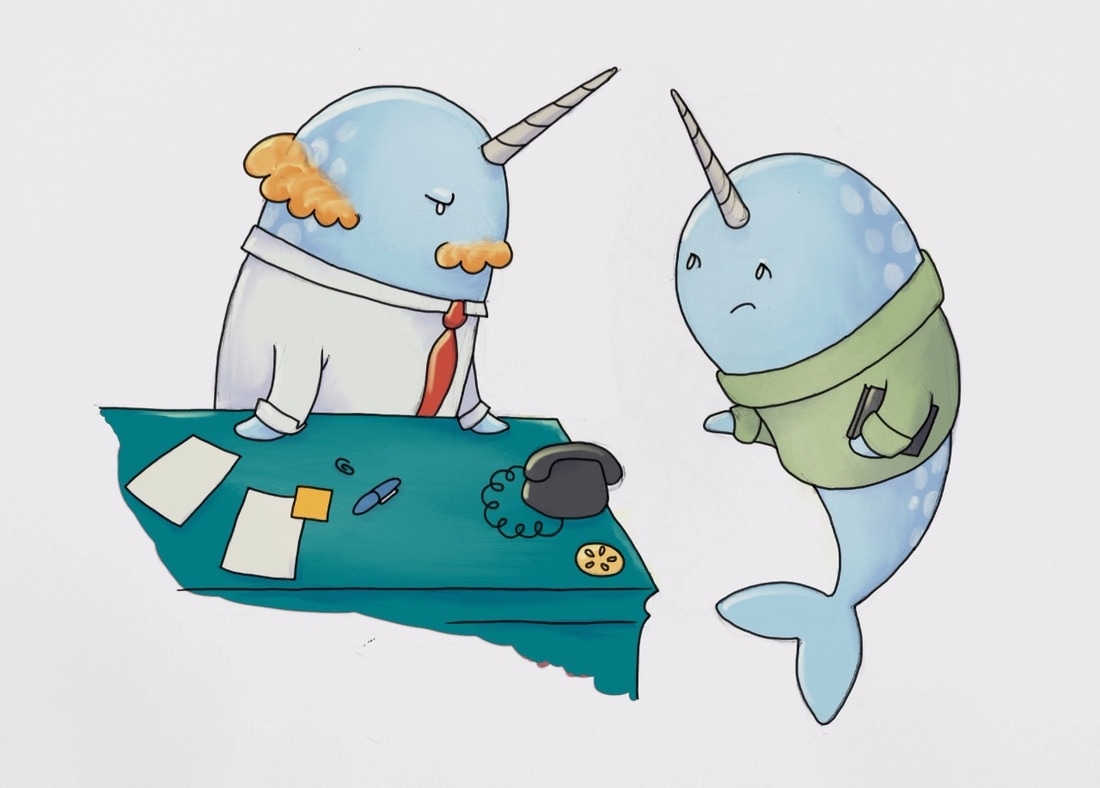Learning to Cope With Loss
/By Mia Maysack, PNN Columnist
There has never been an employment situation that has not been impacted by my chronic migraines, fibromyalgia and other health conditions. I'm a worker bee but pushing myself too hard for too long while trying to keep up has resulted in my inability to pursue aspirations that are not physically feasible.
The realization of not being able to live up to who you feel like you are is a tough one. A person cannot refrain from asking: What is wrong with me?
All the while, outsiders ask the same question, most with a hinge of disbelief pertaining to "invisible illness."
She looks and seems fine. Is anything really wrong with her?
In that regard, I've chosen to no longer stress over occasionally needing to wear my sunglasses indoors.
At least people can see those!
It can be a difficult concept to understand, how someone can seem fine one day, then be bedridden for the duration of any given week. Things we may have been able to do, even just the day before, vary moment by moment.
I’ve sensed an undertone of judgement regarding what taking proper care of myself looks like. A few examples of what I mean:
“Must be nice to lie around in bed all day!”
“You’re still sick?”
“I have headaches too, but still manage to….”
In an effort to alleviate the pressure of these expectations, I've gotten to the point that I do my absolute best to avoid making commitments or plans. I only make them with those who understand my need for sudden disappearances, last minute cancellations, awkward positioning and random yoga stretches.
One of the greatest gifts I've ever given myself is taking good care of and putting myself first. Despite what seems to be a popular belief, that doesn’t mean trips to a day spa or an exotic beachfront. Pursuing self-care for me is the difference between being somewhat functional or a dungeon dweller.
Every time my health interferes with whatever I had my sights on, it’s like ripping gauze off a wound that’s not yet healed. It reopens its own spectrum of painful emotions, often leading to guilt over missing out and all those our absence is impacting. It’s a double-edged sword in a battle I seemingly cannot win.
It can be frustrating, but inward compassion is imperative. Think of it this way: When we know someone we care about is feeling unwell, what do we do? We offer support, advise them to rest, take the time they need, and do whatever is necessary for the sake of their health and healing.
We as chronic pain warriors deserve the same compassion, empathy, respect and self-care. I've learned over the years that forgiveness, patience and grace for ourselves is just as important as having that capacity for others.
My experience has mostly been a lonesome one. Never once have I had a medical professional ask me how I am coping with these heavy burdens that are anticipated to be lifelong. I have still not been able to fully comprehend the gravity of what that diagnosis means.
It has been an excruciating process to get to where I am now. There's no guide book for this stuff, we gotta just keep trying until we find a way to make all of this serve us -- as opposed to the other way around.
I prefer now to find the positive in changes as they come, not worry about them until they do, and neglect the urge to over-analyze them long after they've arrived. For me, it’s all about finding the joy, beauty and blessings in the given. There is always something to be appreciated and admired.
We must remain true to ourselves, even through and despite the turmoil of chronic pain. It may not reflect the vision we once had, but there’s no need to look back. We are not headed in that direction anymore.
Mia Maysack lives with chronic migraine, cluster headaches and fibromyalgia. Mia is the founder of Keepin’ Our Heads Up, a Facebook advocacy and support group, and Peace & Love, a wellness and life coaching practice for the chronically ill.
The information in this column should not be considered as professional medical advice, diagnosis or treatment. It is for informational purposes only and represents the author’s opinions alone. It does not inherently express or reflect the views, opinions and/or positions of Pain News Network.




























